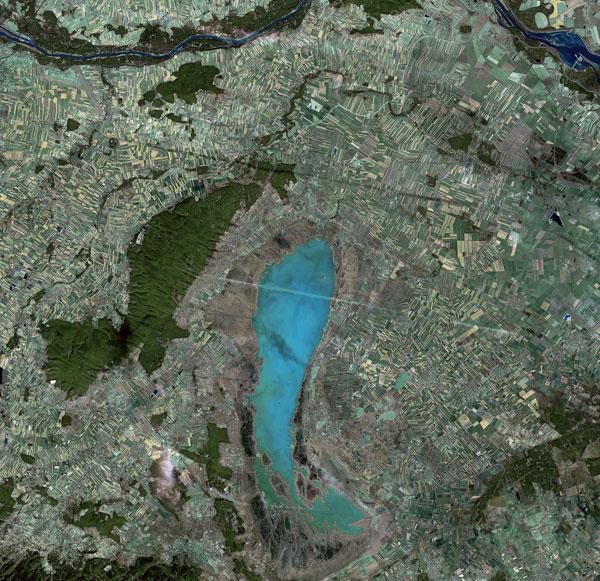
Europe's 'Sea of the Viennese'

Lake Neusiedl, straddling the AustrianHungarian border, is the largest steppe lake in Central Europe.
Neusiedl covers an area around 120 square miles (315 square kilometers), with 90 square miles (240 sq km) situated in Austria and 30 square miles (75 sq km) in Hungary.
Lake Neusiedl, called the 'Sea of the Viennese' due to its close proximity to Vienna, has totally dried up at least 100 times since it formed around 16,000 B.C. Since the lake provides humidity and temperature buffering, the drying-up of the seabed causes major environmental disruptions. The Austro-Hungarian Water Commission has been controlling the water level via a dam since 1956.
Reeds, ponds and wetland areas that provide important habitat for fauna and flora as well as for migratory birds surround Lake Neusiedl, which is a protected wildlife sanctuary. The unique landscape of the Lake Neusiedl region, which encompasses an area of around 290 square miles (750 sq km) around the lake, was designated a UNESCO World Heritage Site in 2001.
The Leitha Mountain range, called 'Leithaberg' by locals, is visible in green northwest of the lake. The soils of the mountains, which are covered by dense deciduous woodland, are dominated by slate and marine limestone.
The Seewinkel area, the largest inland salt region in Austria and one of the most important in Europe, is located east of the lake. As visible, this area is characterised by numerous saline alkaline lakes scattered among grazed meadows.
The sunny climate of the area, the soil and the lake's ability to moderate extreme climate provide optimal conditions for the wine industry; today, wineries are located all around the region.
Sign up for the Live Science daily newsletter now
Get the world’s most fascinating discoveries delivered straight to your inbox.
The famous Danube River , one of Europe's main traffic arteries, is visible running across the top of this image, taken by a European Space Agency satellite.










